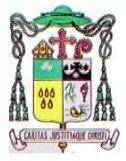The Catholic Bishops' Conference of the Philippines
The Official Website of
CBCP Online

In 1988 the average family income per annum was P20,700. The typical farmer today earns about P500 a month and eats twice a day. A large percentage of pre-schoolers are malnourished. Despite the high literacy rate of the province (88 per cent) due to the presence of 411 elementary schools, 47 high schools and one state university, the migration rate is 5 per 1,000, mostly females of fifteen to seventeen years of age who work as housemaids and entertainers elsewhere.
Like other provinces, Northern Samar has her own share of overseas contract workers, and this poses serious threats to the integrity of family life.
Against this backdrop, the Diocesan Pastoral Programs have come into being to assist in massive development intervention.
The Basic Ecclesial Communities constitute the main thrust of the diocese. These are small cells or communities of about thirty families each, organized to share faith-life experiences and reflections of God's Word, to evolve action toward solving socio-economic and political issues.
The Social Action Program concerns itself with farmers' cooperatives and livelihood projects, justice and peace, disaster preparedness, relief and rehabilitation work under the Commission on Social Action.
The Value Formation Program for Teachers aims to impart moral valued education in the public schools and the university within the diocese, under the Commission on Christian Formation.
The Apostolate on Christian Education is at present being administered by the religious congregations in two diocesan and parochial high schools, and four other public high schools. Kindergarten schools are run by religious women of the diocese in two parishes.
The Lay Ministers Formation Program trains laymen to conduct liturgies on Sundays in remote villages due to the scarcity of priests. The rite prepared by the Episcopal Commission on Liturgy is used, aptly called Sunday Liturgy Without a Priest (SLWP).
Catarman is a diocese of poor people. The challenge of developmental intervention becomes a necessity here. It is along this line that the Diocese is focusing its programs, along with its apostolate on Christian value formation through an intensive re-evangelization program. Catarman, as of this writing, is preparing for its 400th-year anniversary of Christianization in the year 1996.
Close to the end of the sixteenth century Catholic mission centers were established in the island of Capul and in Palapag on the mainland of Samar by Jesuit missionaries. From Palapag the Jesuits spread out their missions to Laoang, Catubig, Pambujan, Bobon and Catarman. From Capul they reached out to areas around Calbayog.
When the Jesuits were expelled from the country in 1768, Spanish Franciscan missionaries took over the administration of the parishes. The Franciscans worked in the area now known as the province of Northern Samar until 1941. From 1941 the secular clergy took over the parishes.
On December 5, 1974, Catarman was made a diocese by His Holiness Pope Paul VI. And on March 11, 1975, the Most Reverend Angel T. Hobayan was installed as the First Residential Bishop of the Diocese of Catarman.
The diocese covers the whole province of Northern Samar, one of three provinces within the island of Samar bounded on the north by San Bernardino Strait, on the east by the Philippine Sea, on the west by the Samar Sea, and on the south by the boundaries of Wester Samar and Eastern Samar provinces. Covered by the diocese are a total of 24 towns, 570 barangays, and a land area of 3,499 kilometers. Catarman is the capital town and the center of the civil administration of the province.
On the ecclesiastical side the Diocese of Catarman is divided into four vicariates representing the municipalities of Allen, Catarman, Laoang, and Gamay, to which belong 18 canonically established parishes. Catarman is the seat of the diocese.
There are thirty diocesan priests, and one Franciscan, working in their assigned parishes with four deacons, and forty-five sisters from seven religious congregations: the Augustinian Sisters, the Franciscan Apostolate Sisters, the Missionary Sisters of the Poor of Christ, the Religious of the Sacred Heart, the Reparatrix Sisters of the Sacred Heart, and the Contemplative Sisters of St. Clare. Most of these nuns run the Catholic high schools in the parishes of Catarman, Allen, San Jose and Laoang.
The total population of the diocese is in the vicinity of 385,000, of which 95 per cent are Catholics, 1 per cent Aglipayans, and 4 per cent Protestants, Iglesia ni Kristos and other non-Christian denominations. The average parish size is about 23,800 people. Catarman has the largest population with 50,000 inhabitants, followed by Laoang with 42,000. The island parish of San Antonio, on the other hand, has only 7,200. The average population of the diocese is 110 per square kilometer.
About 65 per cent of the population of the entire province reside in the rural areas. About 75 per cent are engaged in farming (coconut, rice, abaca), 16 per cent are traders (wholesalers and retailers), 3 per cent semi-skilled and unskilled workers, and 2 per cent are professionals (government employees, teachers).
His Excellency
MOST REV. EMMANUEL C. TRANCE, D.D.
Bishop of Catarman Bishop’s Residence,
Catarman 6400 Northern Samar
Tel. (055)251-8474/251-8173 Fax: (055) 354-1169
e-mail: bptrance@yahoo.com
|
Diocesan Curia |
|
Clergy |
|
Parishes |
|
Educational Center |
|
Institutions |
|
Statistics |

Diocese of Catarman
